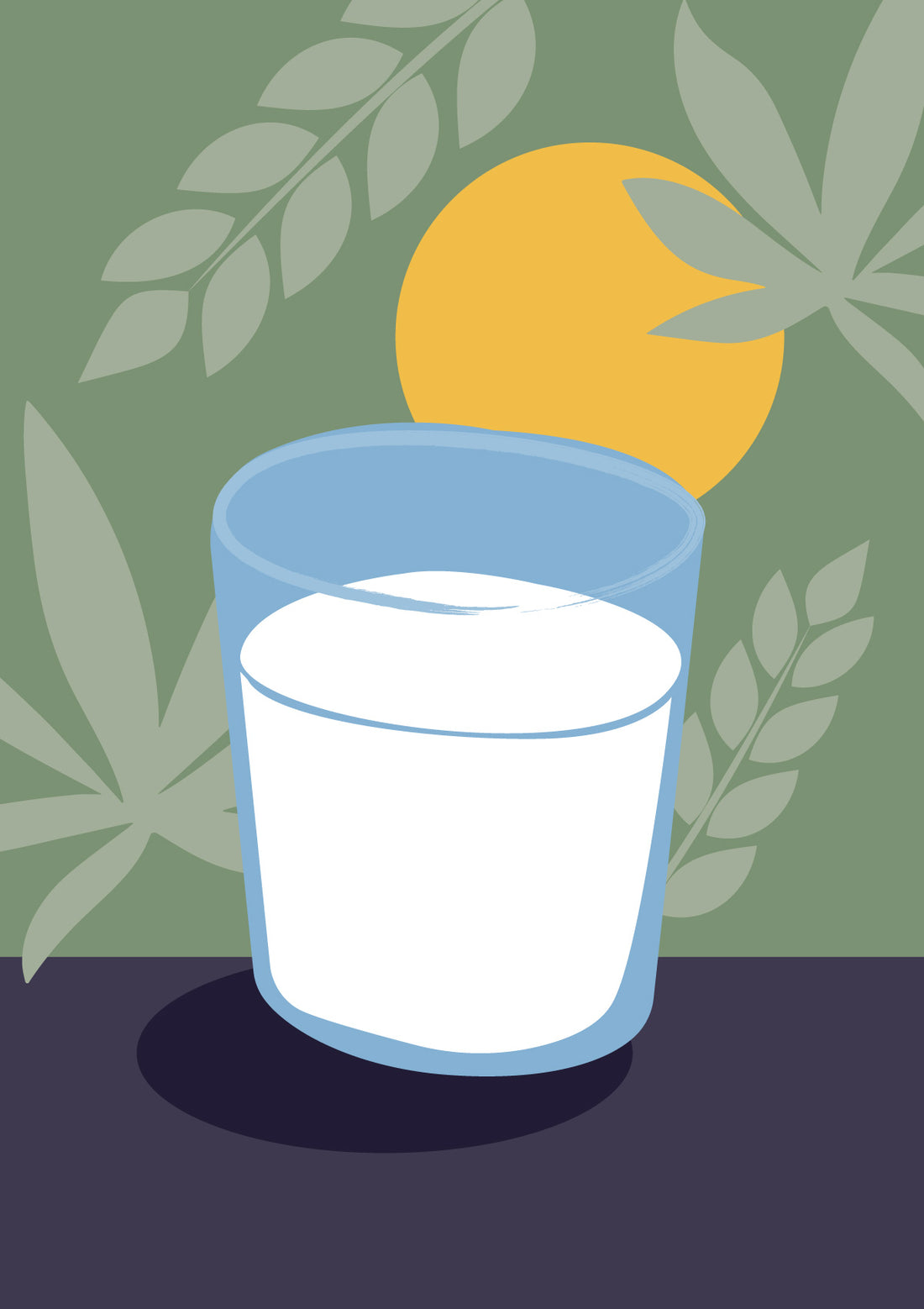
Why Hemp Mylk?
Share

Recently there has become more and more hype around the environmental benefits of plant-based milks. So what is all of the hype about? And what is the most sustainable option?
As we are becoming more aware of our environmental footprint there has been a major shift in the number of people drinking plant-based milk over cow’s milk, and rightfully so. The dairy sector is one of the biggest contributors to greenhouse gas emissions, soil degradation, and air and water pollution, not to mention the increasing rate of deforestation due to the clearing of land for agricultural purposes. Plant milk is therefore a more sustainable alternative, however, which plant milk offers the MOST sustainable option?
There are many variables at play when examining a product's environmental footprint from the time the seed sprouts to when we are slurping the milk up through a (reusable) straw. Variables such as water use, greenhouse gas emissions, land use, soil degradation and chemical runoff. Let’s compare the environmental impact of almond, soy, oat and hemp milk.
Soy Milk
Soy milk has been around for years and is mainly popular because of its high protein count. There is a negative stigma around soy due to the amount of land the soybean farms are taking up in the world today, the soybeans grown on these farms are primarily used for feeding dairy cattle; only 6% is used for human consumption. The greenhouse gases emitted from growing and producing soy is much less than that of dairy but relatively equal to almond. Growing soybeans also requires approximately one-tenth of the amount of water needed to grow almonds. However, there have been issues with soil pollution as well as mass deforestation to clear the way for soy fields.
Oat Milk
Recently oat milk has been the star of plant-based milks due to its creamy flavour and sustainable qualities. Oats have a much lower water impact compared to other plant-based milks and take one-sixth of the amount of water and resources required to produce one pound of almonds which is one of the many reasons it’s known to be the top contender when it comes to sustainability metrics. A lot like hemp, Oats are a regenerate crop, leading them to nurture the soil once they have been harvested. On a more nutritious note, oats are enriched with vitamin B12 and riboflavin which helps your body build red blood cells and works together with your other cellular functions to enhance energy throughout the day.
Almond milk
Almonds, like all nuts, grow on trees and have become increasingly popular in the past decade due to both their health benefits and the need for more plant-based options in supermarkets. The major downside to growing almonds is the large quantity of water required – especially if you are purchasing almonds from drought-prone California. One almond grown in California needs approximately 12 litres of water; this one almond is thrown in with a bunch of other almonds, blitzed and filtered to create almond milk. In some commercially-produced almond milks, only around 2.5% of it is made up of actual almonds; which means all of the water used to grow the almonds is essentially going to waste.
Hemp milk
Hemp is a crop that is popular for its many sustainable characteristics, one being the minimal waste associated in growing and processing the plant. Plus, did you know hemp can be used in over 25,000 products?
Hemp is not only very versatile, it has actually been proven to benefit the environment. How? Well, evidence shows that a hemp crop can absorb four times more carbon dioxide from the atmosphere than a forest (per hectare). Growing a hemp plant prevents chemical runoff as there is no need for pesticides or herbicides to grow, plus its natural irrigation system reduces water use. The roots of the plant help prevent erosion by reaching nine feet below the surface and once the plant has finished growing it decomposes adding nutrients back into the soil for the next crop.
We all know that it can be confusing making the move towards being plant-based, so rest assured that they are all relatively environmentally friendly. That being said when weighing up the options hemp and oats have proven to be more sustainable in the bigger picture. So next time you’re in the isles of your local supermarket looking at all the options, be sure to read the packaging and go towards the most sustainable option available.
References
Good Hemp. (N/D). The facts. Retrieved from Good Hemp: https://www.goodhemp.com/hemp hub/good-hemp-drink-vs-other-drinks/
Good, K. (2021). Why Tofu Consumption Is Not Responsible for Soy-Related Deforestation. Retrieved from One Green Planet: https://www.onegreenplanet.org/environment/why-tofu-consumption-is-not-responsible-for-soy-related-deforestation/
Good, K. Milk Life? How About Milk Destruction: The Shocking Truth About the Dairy Industry and the Environment. Available online: https://www.onegreenplanet.org/animalsandnature/the-dairy-industry-andthe-environment/ (accessed on 03/2021).
Haas, R. (2019). Cow Milk versus Plant-Based Milk Substitutes. Sustainability, 1-25.
Rayburn, E. Research Shows No Matter Which Plant-Based Milk You Try, It Will Always Be More Environmentally-Friendly Than Dairy. Available online: https://www.onegreenplanet.org/news/plantbased-milk-try-will-always-environmentally-friendly-dairy/ (accessed 03/2021)
Vosper, J. (2011). The Role of Industrial Hemp in Carbon Farming. GoodEarth Resources, 1-6.
Willett, W.; Rockström, J.; Loken, B.; Springmann, M.; Lang, T.; Vermeulen, S.; Garnett, T.; Tilman, D.; Declerck, F. The Lancet Commissions Food in the Anthropocene: The EAT—Lancet Commission on healthy diets from sustainable food systems. Lancet 2019, 3293, 447–492.